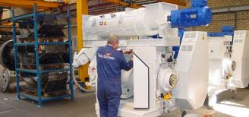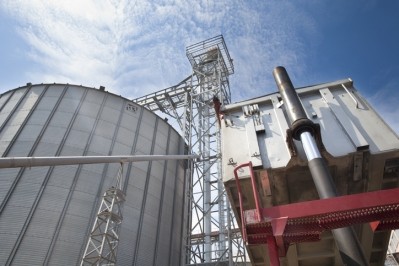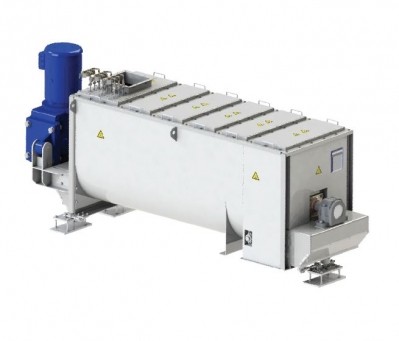Reports from VIV Europe
New Kalmar Lantmän mill at fine tuning stage and 'can produce 100 tons per hour', says Van Aarsen

We caught up with the company at VIV Europe in Utrecht to hear about the emphasis it is placing on process efficiency for the feed sector.
Harold Schroijen, head of sales support at Van Aarsen, said the upgraded pellet mill it launched at the show – CU900 - has a closed oil lubrication system on the main shaft and bearings, and thus eliminates the need for increasingly expensive grease-based inputs.
He said the pelleting equipment also has a new mechanical roller adjustment with roller slip detection, which ensures reduced downtime during pellet loading as the operator can easily determine if the rollers are working.
“It also withstands long-runs – up to 16 hours per day,” said Schroijen.
The machinery has been tested in-house and is now going through an evaluation phase in the field.
Kalmar Lantmän feed efficiency project
Meanwhile, the €50m feed mill the company has just completed for Kalmar Lantmän in the south of Sweden is going through the “tweaking” stage to ensure all systems are functioning 100%, said Schroijen.
“It is one of the most modern feed mills in Europe. There are three dedicated lines at the plant – one each for pig, chicken and cattle feed – to minimize contamination, and the mill has capacity of 100 tons of feed per hour,” said Schroijen.
The Swedish agri co-operative inked the deal back in April 2012, with the intention of replacing two existing feed mills and lowering costs per ton of feed through a greater degree of automation, flexibility and efficiency to leverage ongoing growth in the chicken and pork sectors in that country.
“All silos, mixers and bins can be placed on load cells for greater process control. At any given time, the operators will know exactly where product is,” said Schroijen.
He said optimum hygiene is also assured at the mill, with all walls, ceilings and floors coated and walls to ensure hygienic separation between the different areas of the plant.
“There are online sensor systems to measure temperature, pellet quality and moisture level as well as dust, sparks and smoke,” he added.
The inclusion of 52 individual dosing scales, said Schroijen, also enables flexible dosing, while a high level of automation means fewer operators are required and energy efficiency innovation lowers overall oil and electricity costs.










